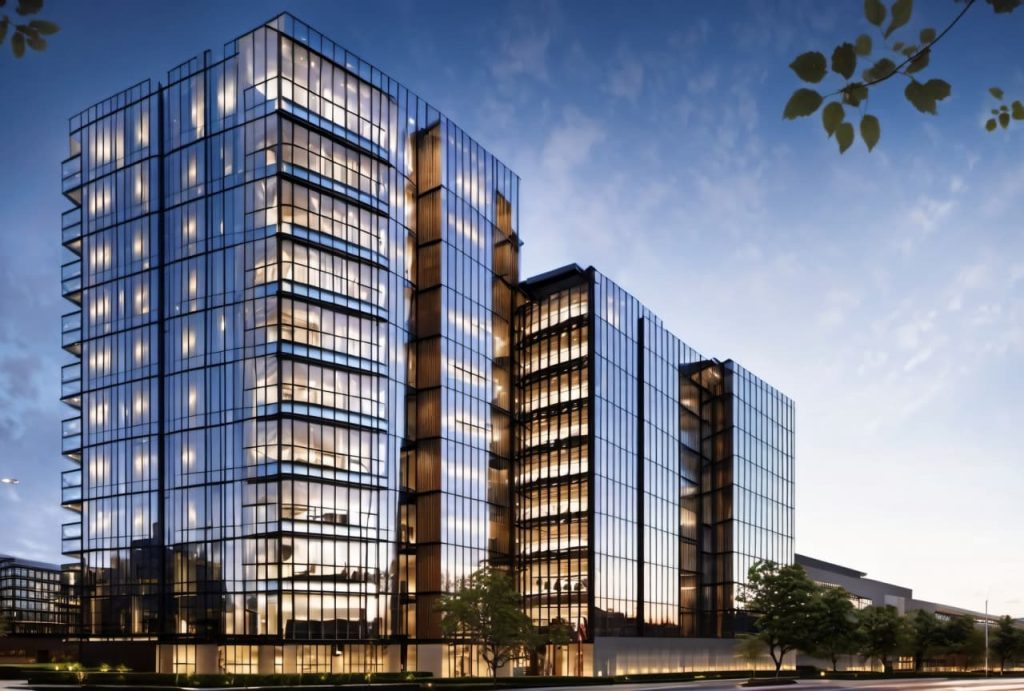Exploring Modern Architectural Styles
Megan Gray August 14, 2025
In the world of architecture, modern design continues to evolve, blending aesthetics with innovation. As cities expand and technology advances, the architectural landscape is shifting to meet the needs of a more sustainable, functional, and visually striking future. Whether it’s residential homes, commercial buildings, or public spaces, modern architecture embraces new materials, technologies, and ideas, creating structures that not only stand out but also serve a purpose.

Emerging Trends in Modern Architecture
Modern architecture is a blend of functionality, beauty, and sustainability. The following trends are becoming more prominent, defining how buildings are designed and constructed.
1. Sustainability and Green Building
Sustainability is perhaps the most significant trend in modern architecture today. With concerns about climate change and the environment, architects are focusing on reducing the carbon footprint of their buildings. Sustainable designs are now mainstream, integrating green roofs, solar panels, energy-efficient windows, and materials that have minimal environmental impact.
Buildings today are designed with energy conservation in mind. For example, passive house designs, which rely on insulation and energy-efficient heating and cooling systems, have become increasingly popular in residential architecture. This approach not only reduces energy consumption but also promotes healthier indoor air quality.
Architects are also embracing biophilic design, which connects people with nature by incorporating natural elements like plants, water features, and sunlight into the built environment. This trend is seen in commercial buildings where indoor spaces are designed to promote well-being and reduce stress levels, providing a healthier work environment.
2. Minimalism with a Focus on Functionality
The minimalist design, characterized by clean lines, open spaces, and a “less is more” philosophy, has become a hallmark of modern architecture. In minimalist homes, you’ll often find open floor plans that create a sense of spaciousness. Neutral color palettes and simple furniture are used to keep the focus on the architectural features of the building.
However, modern minimalism goes beyond aesthetics. Functionality is just as important. Architects are designing spaces that maximize usability and comfort. For example, open-concept kitchens and living areas are becoming the norm in residential designs. The goal is to create a space that’s visually calming but also practical, where every element serves a specific purpose.
Moreover, technology plays a vital role in functional design. Smart homes equipped with automated systems for lighting, heating, security, and entertainment are increasingly common. The integration of technology into home design is pushing the boundaries of what a building can do, making it more intuitive and responsive to the needs of its inhabitants.
3. Adaptive Reuse and Historic Preservation
As cities grow, there’s a growing movement toward adaptive reuse, where old buildings are repurposed for new uses instead of being demolished. This trend has become especially important in urban environments where space is limited, and the preservation of historic structures is valued.
Adaptive reuse allows architects to breathe new life into old structures while maintaining their historical significance. For example, an old industrial warehouse may be transformed into a modern office space or a mixed-use residential complex. This approach minimizes waste and conserves resources, making it an eco-friendly alternative to new construction.
One of the challenges with adaptive reuse is balancing the preservation of historic elements with the need to meet modern building codes and standards. However, architects are becoming increasingly skilled at blending old and new, using contemporary materials and techniques that enhance the original structure without compromising its historical integrity.
4. Use of New Materials and Technology
Advances in building materials are transforming the way architects approach design. Modern architecture makes extensive use of materials like steel, glass, and concrete, creating sleek, contemporary buildings that are both structurally sound and visually appealing. However, architects are also exploring newer materials, such as carbon fiber and composite materials, to achieve stronger and more lightweight structures.
3D printing is another exciting technology that’s revolutionizing modern architecture. With 3D printing, architects can create complex, customized structures with precision and efficiency. This technology is still in its early stages, but it holds great promise for the future of construction, allowing for faster, more cost-effective building methods.
Another innovation gaining traction is the use of smart materials that respond to environmental changes. For example, photochromic glass can adjust its transparency based on the amount of sunlight, reducing the need for blinds or shades. These kinds of materials not only improve the functionality of a building but also contribute to its energy efficiency.
5. Globalization and Fusion of Styles
Globalization has influenced modern architectural styles, with architects drawing inspiration from various cultures and regions. The fusion of different architectural traditions creates a unique aesthetic that celebrates diversity while embracing universal design principles.
For instance, many modern buildings combine Western minimalism with traditional Eastern elements, such as Japanese shoji screens or Chinese Feng Shui principles. This blending of styles allows for greater creativity and innovation in design. It also reflects the global interconnectedness of our world, where cultural exchange is prevalent in many aspects of life.
6. Smart Cities and Urban Architecture
As technology advances, urban planners and architects are embracing the concept of smart cities, where buildings and infrastructure are integrated with digital technologies to enhance urban living. Smart city designs incorporate data-driven systems for traffic management, energy consumption, waste management, and public safety, creating more efficient and livable urban spaces.
Modern urban architecture is also becoming more pedestrian-friendly, with a focus on walkability, public spaces, and transportation networks. Architects are prioritizing mixed-use developments that integrate residential, commercial, and recreational spaces, making cities more sustainable and reducing the need for long commutes.
Conclusion
Modern architectural styles are not just about creating visually stunning buildings. They are about enhancing functionality, promoting sustainability, and adapting to the ever-changing needs of society. As trends continue to evolve, we can expect architecture to push boundaries, embrace new technologies, and shape the way we live and interact with the world around us.
Architects and designers are embracing the challenges of modern living, using innovative design strategies to create buildings that are both practical and beautiful. Whether through sustainable building materials, minimalist design, or the integration of technology, the future of architecture is bright. It’s clear that modern architectural styles will continue to evolve, reflecting the growing demands of a dynamic and interconnected world.
References
- Breen, L. (2021) Modern Architecture: A Critical History, 4th edn. New York: Thames & Hudson. Available at: https://www.thamesandhudson.com (Accessed: 14 August 2025).
- Bontempi, M., & Bonomi, A. (2020) ‘Sustainability in Modern Architecture: From Green Buildings to Smart Cities’, Architecture and Urban Planning, 45(2), pp. 32-47. Available at: https://www.jstor.org (Accessed: 14 August 2025).
- Foster, N. (2022) ‘The Impact of New Technologies in Architecture’, Journal of Contemporary Architecture, 12(1), pp. 112-128. Available at: https://www.jca-archjournal.com (Accessed: 14 August 2025).







